I’ve seen 3D printed stamps around the various 3D printing download sites for many years. The results I’ve seen never seemed particularly good. For a long time the only filament you could print with were hard plastics and now that some flexible and alternative filaments are available I wanted to try printing stamps with them.
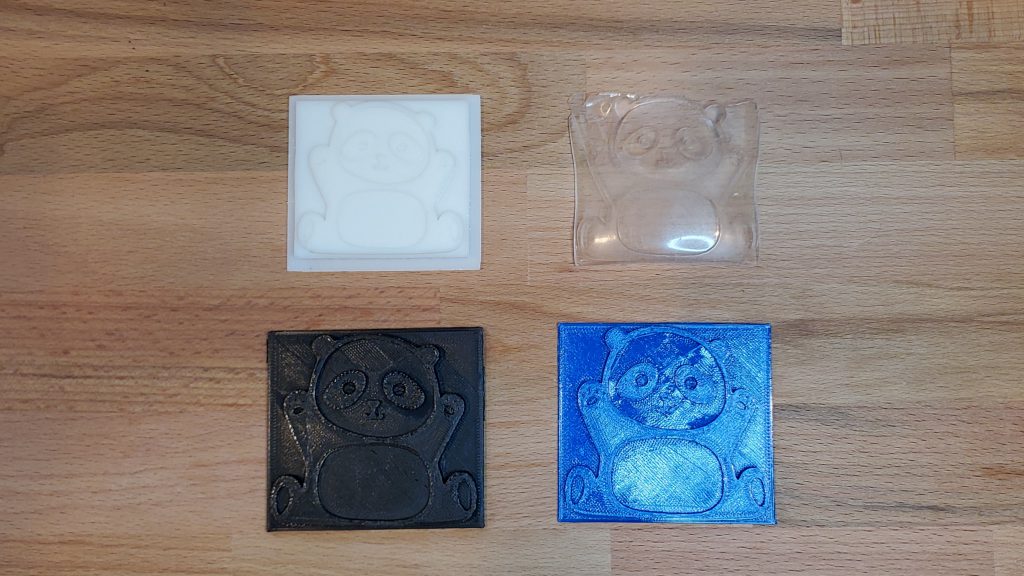
To start off, I downloaded a free SVG of the “adorable panda” from craftbundles.com. I used the image to model a 3D stamp in a CAD program and then printed them in several filaments and resins to test which would be the best method to 3D print a stamp.
The top two stamps were printed in a DLP (photopolymer resin) printer and the bottom two stamps were printed on an FDM printer (extruded plastic). Specifically, the stamps were printed in the following materials:
Top Left: 3DSR White Resin, a hard white plastic-like stamp
Top Right: Monocure 3D Rapid FLEX100 Clear, a very flexible rubbery stamp.
Bottom Left: a standard Black PLA, a hard black stamp.
Bottom Right: Gizmo Dorks Flexible TPU, a more flexible filament.
TPU is a new-ish material I was testing out while I was printing mini rubber tires for a miniature Tesla truck I was printing for someone.
When printing with TPU, the thickness of walls and the infill of the print will determine how flexible the result will be. For something 3D like tires, a 10 or 20% infill is relatively flexible and produced a pretty realistic tire. For something flat like a stamp, the result is still pretty stiff, but does have some give.
The FLEX100 resin was a real pain to print with but was the most flexible. It took me about 10 prints with different configurations to get something mostly usable.
This is the closest you are likely going to get to a standard photopolymer stamp. I’ve made those before, you can see read the tutorial at: Making Photopolymer Stamps: Materials List & Pictorial.
Even the stamp I decided to use for this test didn’t come out perfectly, but the damaged portion was just on the backing of the stamp and not the stamp face.
Previous prints were damaged just from cleaning the residual resin off the stamp. Monocure does have ratio suggestions right on their product page for mixing this resin with some of their other resins which I may try in the future if I buy more of their resins.
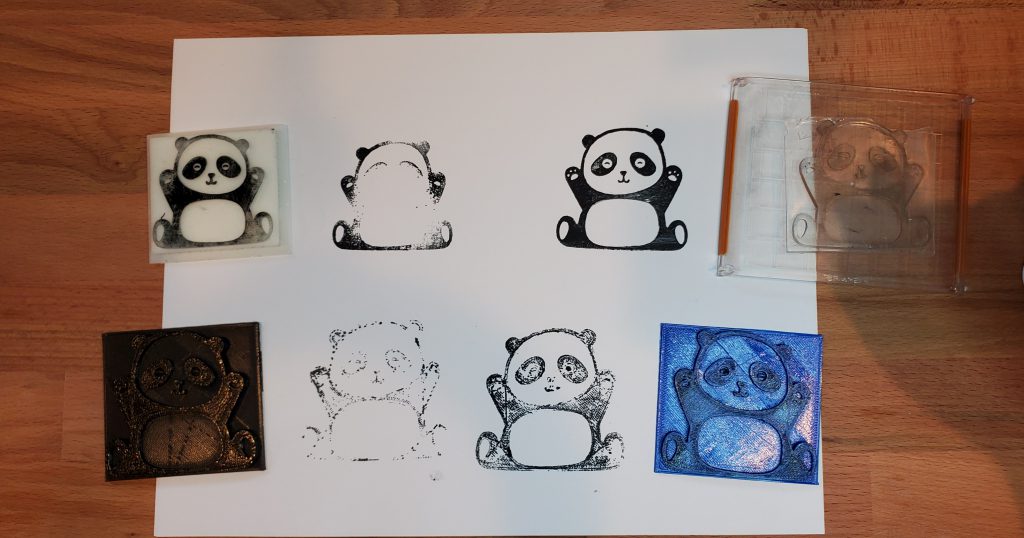
The initial stamps right from the printer produced less than stellar results.
The white resin (top left) stamp was actually pretty good, but the stamp was slightly warped so the center wasn’t making contact with the paper. However, the portions that did stamp were very solid.
The FLEX100 resin (top right) would actually temporarily stick to a stamping block. If you were actually stamping with it though I would suggest using a temporary adhesive or permanently glue it to a block. It would only stick for a few seconds before starting to curl up. It did produce the best stamp right out of the gate.
The hard black PLA stamp (bottom left) was dismal.
The flexible blue TPU stamp (bottom right) was also awful. I had thought it would do better than this.

Next, I took the 3 harder plastic stamps to a sanding block. I sanded until it appeared all areas of the stamp had been touched and were roughed up. The idea being the roughed-up surface would hold ink better and any warping of the plastic would be removed and the stamp would be nice and flat.
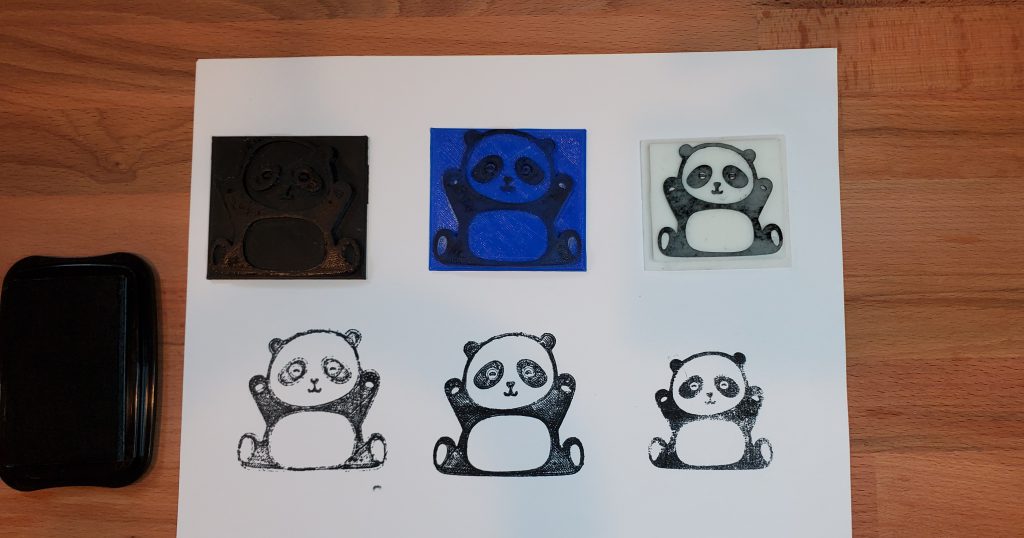
I re-stamped them and they all did much better. With a bit more sanding I bet they’d all do quite nicely. My sanding block is pretty worn from refinishing some walls in the house and I don’t have any more sanding paper laying around. For now, this is probably as good as it’s going to get. With some new sanding paper, these probably would’ve stamped perfectly.
Besides, I gleaned pretty much everything I needed to know at this point to start printing stamps. My takeaways from these tests are:
FDM (extruded plastic) stamps will work fine, but they do have their limitations.
- You will need to sand your stamp
- Image details are very limited. Tiny lines, like the paw prints on these pandas, are almost entirely lost.
- TPU will do slightly better than PLA filament for stamping inks.
- Probably most suitable for simple block prints or leather stamping where the traditional material was wood or metal and a very hard stamp is desirable or required.
Resin printed stamps came out a clear winner for 3D Printed stamps.
- Hard resins may still need to be sanded to remove any warping.
- The stamps will retain high details from the original artwork.
- Flexible resin is very hard to print (at least on my printer it was). It will take a lot of monkeying around and bad prints to figure out how to produce a usable stamp. This isn’t for people new to 3D printing.
- Flexible stamps will need to temporarily or permanently adhered to a stamping block. I had rubber cement and temporary basting spray on stand by.
- Most home resin printers are still quite small unless you’re willing to pay many thousands of dollars for a large printer. 2 or 3″ stamps are probably the largest you’ll be able to print.
The final verdict: If you’re willing to work with horrible smelling resins and suffer though learning how to print with it, flexible resin is the clear winner for 3D printed stamps.
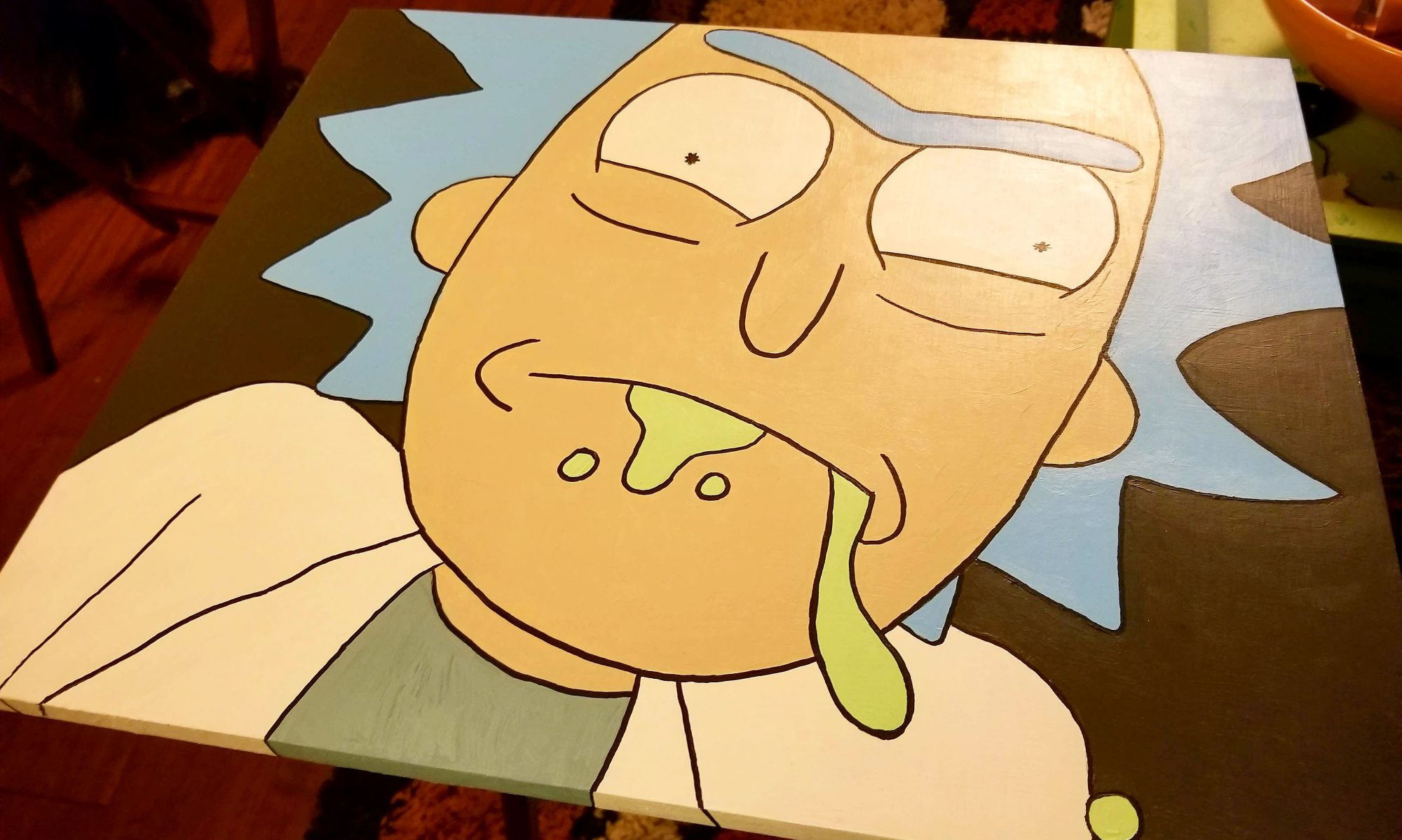

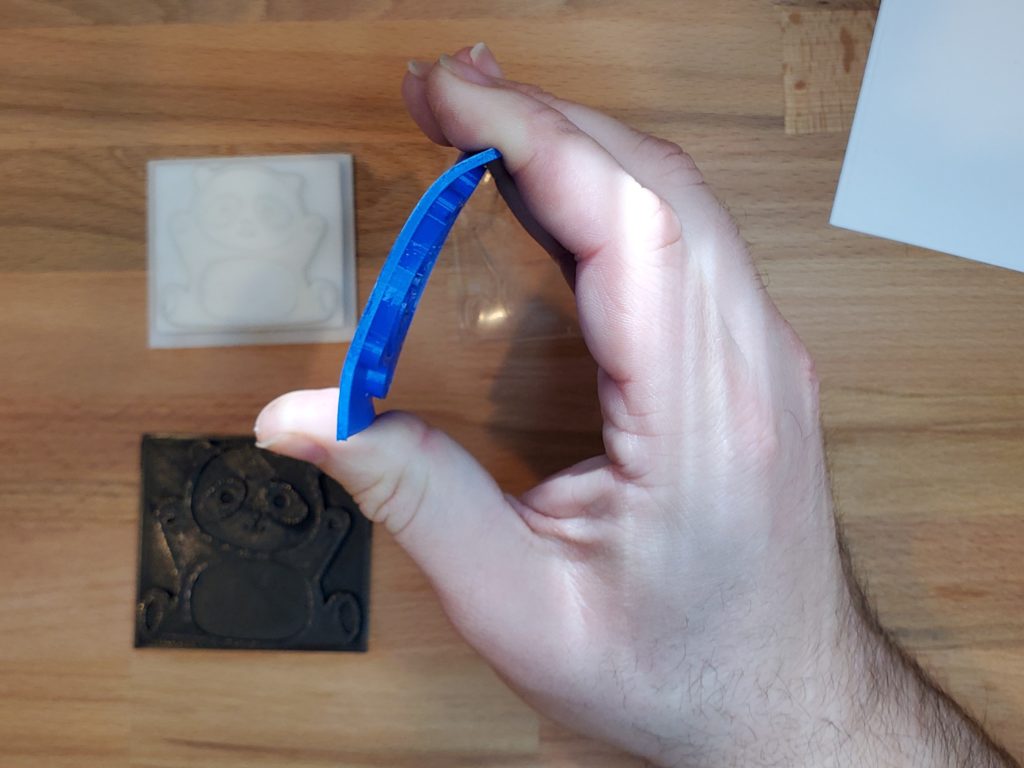
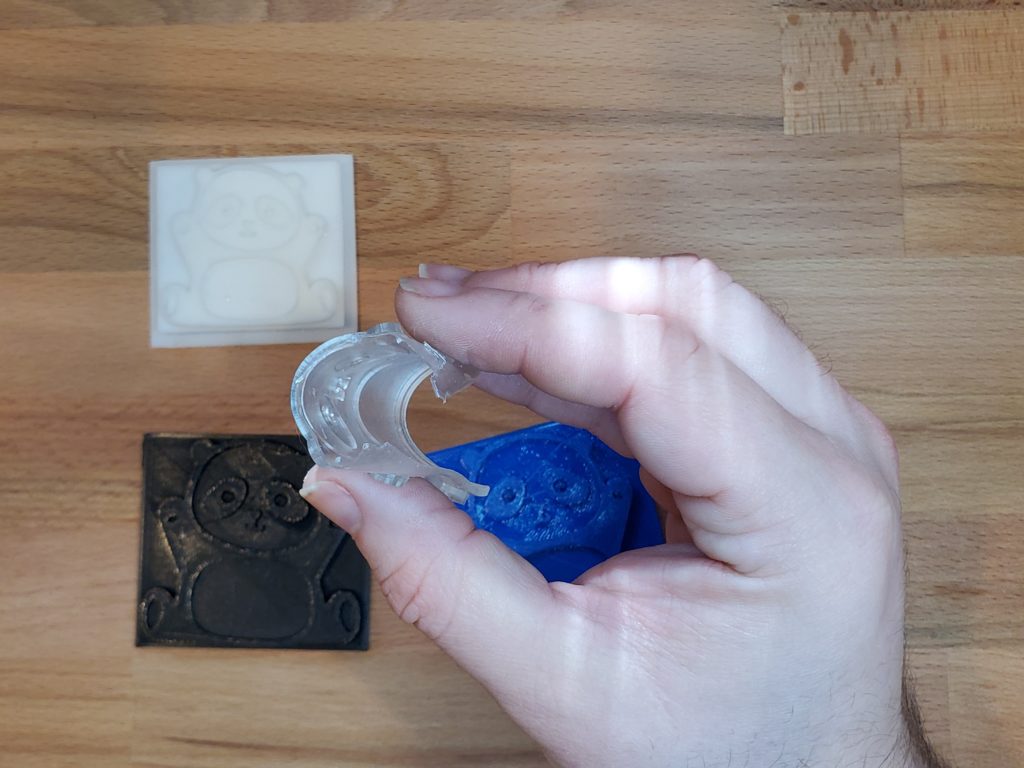
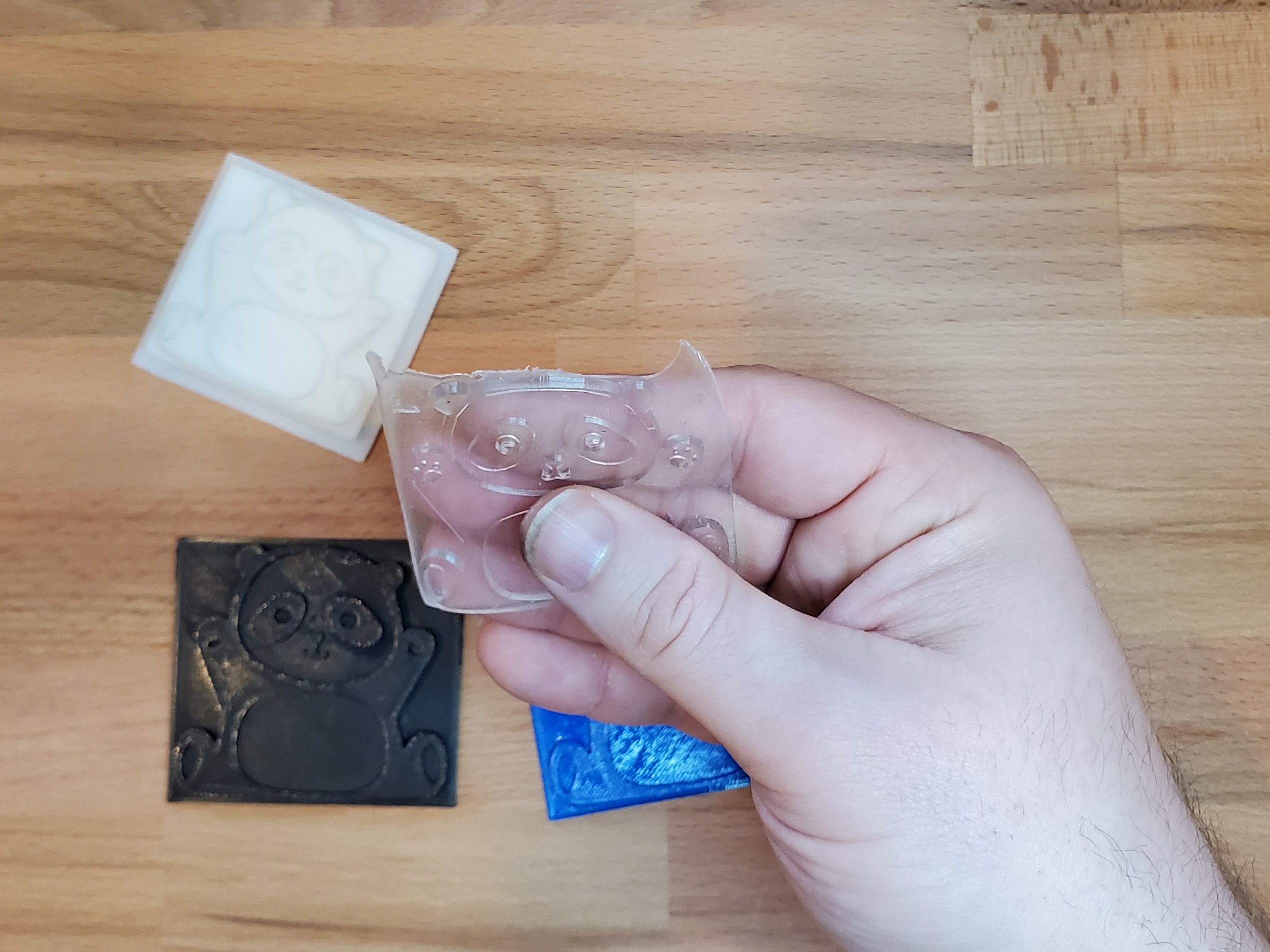
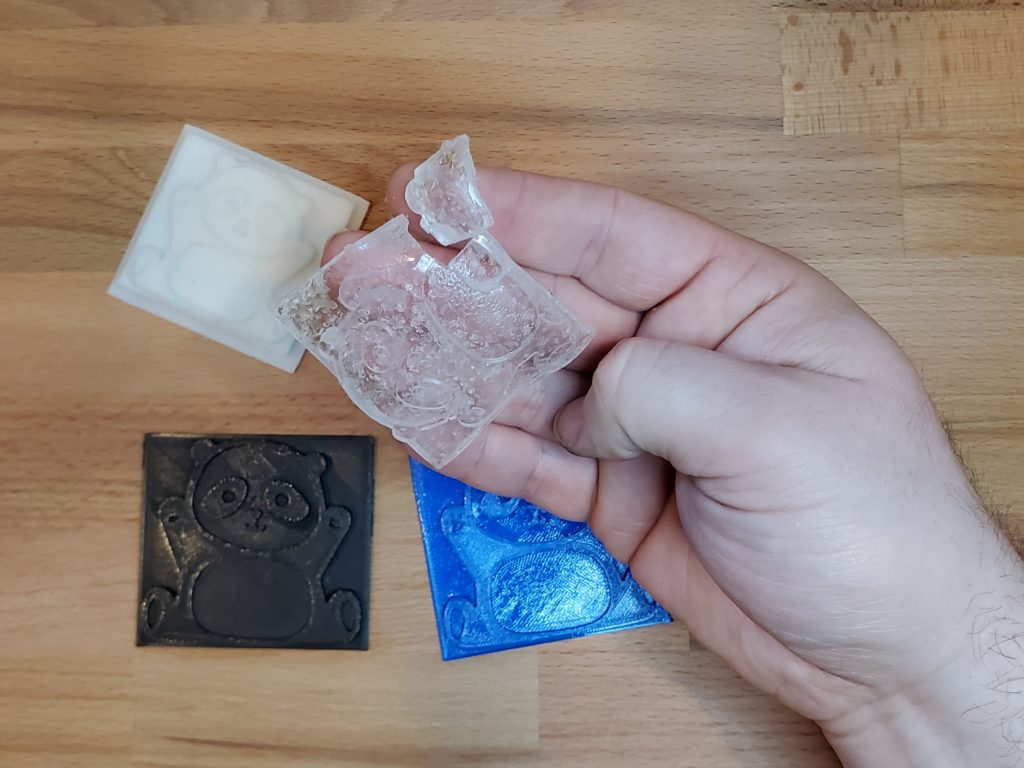
Thank you so much for this